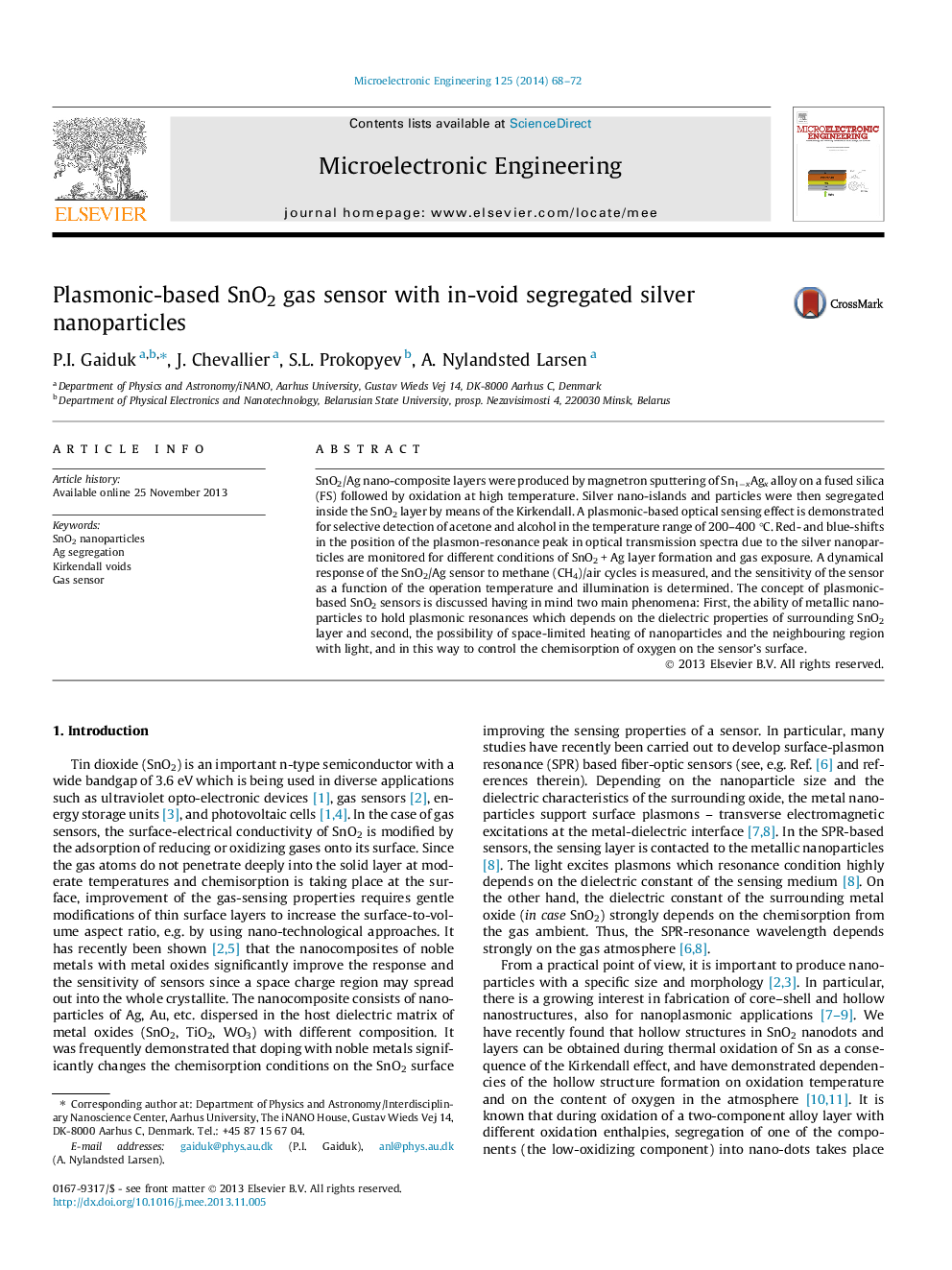| Article ID | Journal | Published Year | Pages | File Type |
|---|---|---|---|---|
| 542530 | Microelectronic Engineering | 2014 | 5 Pages |
•Self-assembling of metallic dots in hollow SnO2 nanoparticles.•Kirkendall-effect assisted segregation of silver particles.•A plasmonic-enhanced SnO2 gas sensor.•Light-assisted heating of nanoparticles to control chemisorption on the sensor’s surface.
SnO2/Ag nano-composite layers were produced by magnetron sputtering of Sn1−xAgx alloy on a fused silica (FS) followed by oxidation at high temperature. Silver nano-islands and particles were then segregated inside the SnO2 layer by means of the Kirkendall. A plasmonic-based optical sensing effect is demonstrated for selective detection of acetone and alcohol in the temperature range of 200–400 °C. Red- and blue-shifts in the position of the plasmon-resonance peak in optical transmission spectra due to the silver nanoparticles are monitored for different conditions of SnO2 + Ag layer formation and gas exposure. A dynamical response of the SnO2/Ag sensor to methane (CH4)/air cycles is measured, and the sensitivity of the sensor as a function of the operation temperature and illumination is determined. The concept of plasmonic-based SnO2 sensors is discussed having in mind two main phenomena: First, the ability of metallic nanoparticles to hold plasmonic resonances which depends on the dielectric properties of surrounding SnO2 layer and second, the possibility of space-limited heating of nanoparticles and the neighbouring region with light, and in this way to control the chemisorption of oxygen on the sensor’s surface.
Graphical abstractTransmission spectra of Sn0.35Ag0.65 alloy layers on a fused silica after magnetron deposition followed by thermal treatment at different conditions.Figure optionsDownload full-size imageDownload as PowerPoint slide
